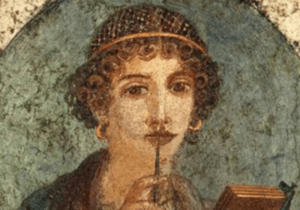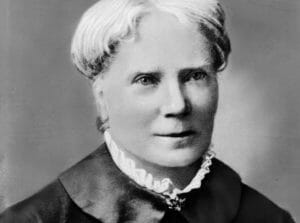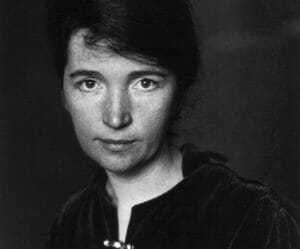
A Brief History of Women’s Health
Every year, March is entirely dedicated to celebrating women, starting with International Women’s Day and continuing with Women’s History month, highlighting exceptional females who have made history.
Thus, as we celebrate Women’s History Month this March, we look back to the contributions of women to women’s health, gynecology, and birth control throughout history.
In this article we will be uncovering the answer to the following topics:
- The Roots of Women’s Health & Gynecology
- The Earliest Form of Contraception
- The 6 Notable Women in the History of Women’s Health
Who are other remarkable women who played a key role in the development of Women’s Health? Share it with us!
The roots of women’s health & gynecology
One of the oldest mentions of women’s health dates back to ancient Egypt – the Kahun Gynaecological Papyrus is one of the largest manuscripts from 1850-1700 BC. The manuscript has 34 paragraphs that detail medical problems related to women’s health.
The Kahun Papyrus contained accounts of the symptoms, how the physician should deal with the patients presenting these symptoms, and the recommended treatments. Treatments included “fumigation, massage and medicines” that came in pessaries or liquids.
It was a common belief in ancient Egypt that many illnesses resulted from the conditions of the womb.
The earliest form of contraception
You have probably heard of the “withdrawal” or “pull-out method” before – latin known as coitus interruptus, this is probably the oldest form of contraception. In the Bible, in the book of Genesis, men were called upon to practice this.
The first mention of a condom dates back to ancient Egypt – drawings show that men wore condoms that were made of animal hide. Interestingly, early Egyptians dyed condoms in different shades to distinguish social classes and to protect themselves against snail fever, a disease caused by a parasitic worm.
It was recorded in ancient Egypt that crocodile dung was used as contraception, but it was not clear whether it was inserted into the vagina or used as an incense for fumigation.

Bronze Roman pessary dated between 200 B.C. and 400 E.C. was used to support the uterus.
For thousands of years, women have also tried various mixtures like fruit acids and inserted them into the vagina to prevent pregnancy. It is known that acidic and alkaline environments created by these mixtures are not sperm-friendly, so these may have helped with preventing pregnancy to some degree.
Pessaries are the earliest contraceptive device for women.
The first oral contraceptives and female barrier methods
It was the Greek philosopher Aristotle who was the first to propose using natural chemicals as spermicides. But the first oral contraceptive was an herb found in Libya called Silphion, the use of which as a contraceptive dates back to 600 BC.
Vaginal barriers like leaves and sponges were used for centuries. Up until this day, sponges with spermicide are still being used. The diaphragm was invented in 1882 and female condoms became available in early 1900s.
The 6 notable women in the history of women’s health
Female physicians in antiquity doomed to oblivion
When you look back in ancient history, you will see that medicine is largely dominated by men. Women were mostly doing housekeeping. But two physicians stood out in the Early Byzantine Era: Aspasia and Metrodora. Both women physicians performed innovative surgical operations during their time.
Aspasia became a famous midwife and gynecologist who founded the origins of the obstetrical practice. She performed “venesection, hysterectomy, open subinguinal varicelectomy and hydrocelectomy” and was considered as great as the best male surgeons of her time.

Metrodora stood out as a gynecologist, midwife and a scholar of women’s medical problems.
Metrodora was another female physician who was an extremely competent gynecologist, midwife, and surgeon who lived in the 2nd century AD. She wrote the oldest medical text created by a woman titled “On the Diseases and Cures of Women”.
She advised to “apply potato porridge mixed with goose fat in the form of pessos” (or pessary). Much of her work and concepts about the female body are still used by doctors today, such as examinations done with speculums, sexually transmitted infections, and other medical concepts that have become part of the modern OB-GYN techniques.
Women’s health of modern times
Fast forward to the 19th century, where Elizabeth Blackwell and Marie Elizabeth Zakrzweska were some of the key players in women’s health and gynecology.

Blackwell received as the first women a medical degree in the US.
Elizabeth Blackwell became the first woman doctor of medicine in modern times. She was the first woman to receive an M.D. degree from an American medical school.
In 1875, Blackwell was appointed professor of gynecology at the London School of Medicine for Women. In her book “Pioneer Work in Opening the Medical Profession to Women“, she encouraged education for women in medicine.
Another 19th century physician who helped women become accepted as medical professionals was Marie Elizabeth Zakrzewska. The German-born American physician was the founder of the New England Hospital for women and Children. She studied midwifery at the Charité Hospital in Berlin, one of the biggest university hospitals in Europe.
Zakrzewska and Blackwell met in 1853 and both contributed to the acceptance of women physicians.
On the path towards modern contraception
In the 20th century, Margaret Sanger founded the birth control movement in the United States and became an international leader in the field. She practiced obstetrical nursing on the Lower East Side of New York City, where she saw first hand the relationships between poverty, uncontrolled fertility, high rates of infant and maternal mortality, and deaths from botched illegal abortions.
Seeing this made Sanger believe in the importance of every woman’s right to avoid unwanted pregnancies.
Credit is given to Sanger for originating the term ‘birth control’. In 1916 she opened the first birth control clinic in the United States, and later founded the American Birth Control League now known as Planned Parenthood.

Sanger had long dreamed of a magic pill to prevent conception.
In the United Kingdom, Marie Stopes was one of the pioneers in the field of family planning. She published her book “Wise Parenthood” in 1918, which she made available to the general public explaining how contraception worked.
This book helped many women make their own decisions and control their own fertility. In 1921 she opened the first family planning clinic in England in North London. She was a powerful and influential advocate of birth control.
Women’s health today
Thanks to the help and dedication of many women and men throughout history, we have come a long way in our understanding of women’s health, gynecology, and birth control.
Yet, there is still plenty of room for innovation and it’s exciting to see how the landscape continues changing today. By developing a modern version of a century old gynecological tool called tenaulum, we at Aspivix also commit ourselves to bring innovation and women-centric approach to the women’s health.
Sources:
- The Kahun Gynaecological Papyrus: ancient Egyptian medicine
- A Timeline of Contraception
- Birth Control Timeline
- The story of the condom
- CONTRACEPTION: PAST, PRESENT AND FUTURE FACTSHEET
- Aspasia and Cleopatra Metrodora, Two Majestic Female Physician Surgeons in the Early Byzantine Era
- The 10 most influential women in the history of medicine
- 3 Powerful Women in OB-GYN History
- Chaning the face of medicine
- Elizabeth Blackwell
- Changing the face of medicine
- Margaret Sanger
- TWO CENTURIES OF WOMEN’S HEALTH IN TWO MINUTES
- Marie Stopes (1880 – 1958)
Share this story:










